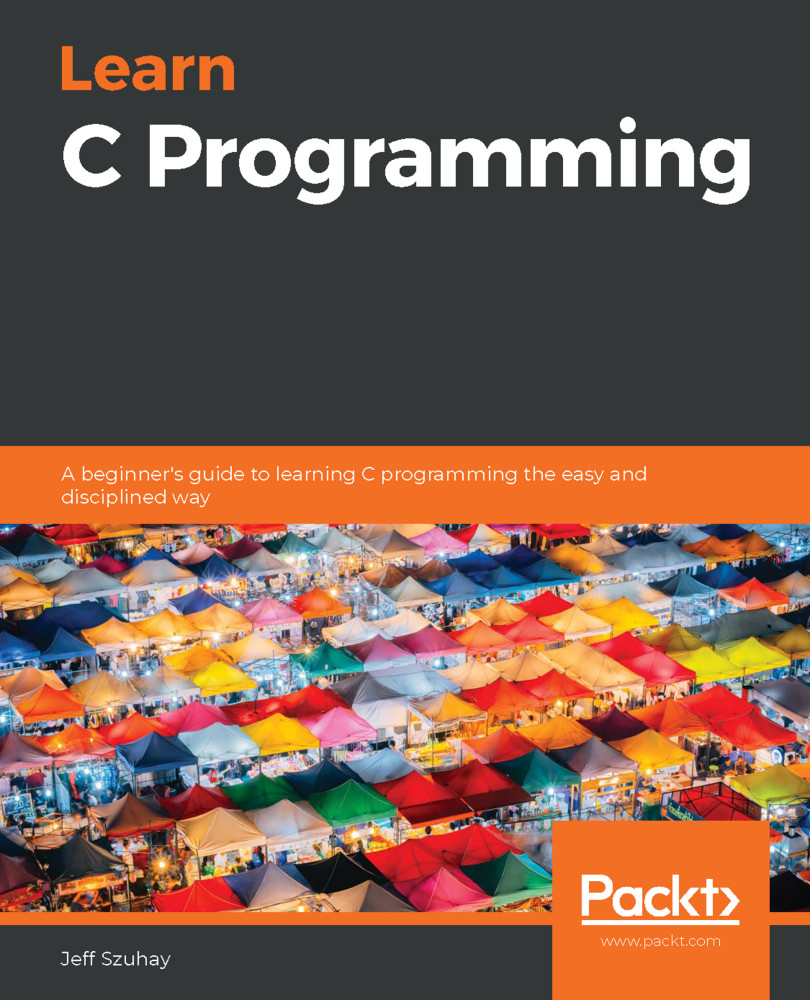To access an array element using array notation, we must be consistent in using both the dimensions of the array and the valid range of offsets for each dimension.
To access an element of an array, we would use the [ and ] notation for each of its offsets in each dimension. Remember that C indices are zero-based. It is better to think of them as offsets from the array base. For example, the column offset for the first element in a one-dimensional array is [0]. The row offset for the first row of a two-dimensional array is [0][x]. The layer offset for the first layer of a three-dimensional array is [0][y][x]. Putting this knowledge to work, let's access the third element of our various arrays, as follows:
int third;
first = array1D[2]; // third element.
first = array2D[0][2]; // third element of 1st row.
first = array3D[0][0][2]; // third element of 1st layer and 1st row.
first = array4D[0][0][0...


